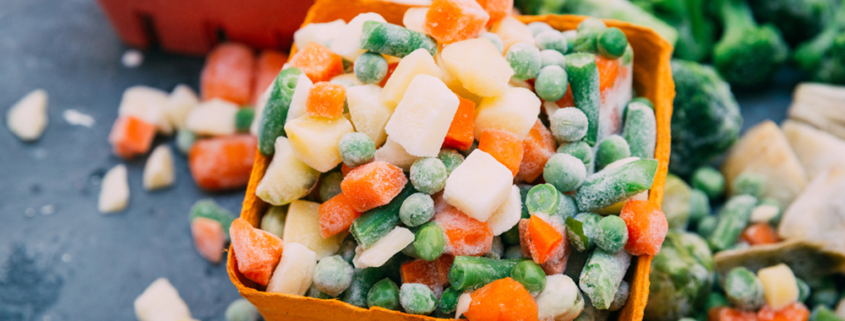Long Island Registered Dietitian Discusses Fresh & Frozen Fruits and Vegetables: Debunking Misinformation About Frozen Foods
A balanced and diversified healthful food plan is important whether you are trying to lose weight, are living with a chronic illness, or want to promote health and prevent disease. We all know that your shopping cart should be loaded with fruits and vegetables. As a registered dietitian it is important for me to explain that fresh may not always be the best choice. Deborah Malkoff-Cohena, RDN states what I have found to be true, “There is a common misconception that frozen fruit and vegetables are not as healthy as their fresh counterparts.”
Most produce is not grown locally so must be picked before it has ripened. Ethylene gas is used to ripen the fruits and vegetables during the long-haul, so they are at their peak when arriving at their destination. Furthermore, since they must be shipped long distances, this further reduces their nutritive value and taste. These products look beautiful, but the length of time from farm to fork degrade nutrition and taste.
Frozen fruits and vegetables are generally picked at their peak of ripeness and flash-frozen, so they retain their nutrients. Some farms even blanche their vegetables before freezing to preserve their color, flavor, and nutritional value.
Confirmation of nutrient preservation in frozen fruits and vegetables comes from the Journal of Food Composition and Analysis and the journal Nutrition. They found higher levels of many vitamins, minerals, and fiber than their fresh counterparts. Of course, fresh is always best when locally grown.
The only requirement is to be sure that whenever you are buying a frozen food, you read the list of ingredients. Stay clear of frozen products with added ingredients, particularly sugar, salt, and sauces. The fruit or vegetable should be the only ingredient.
To make any diet changes sustainable, they need to be convenient. This is another reason to select frozen products. Busy schedules can make it a challenge to put fresh fruits and vegetables on the plate. Already chopped, pitted, or peeled produce can decrease prep time which will allow many to increase their daily intake of healthful foods. And what more, the variety of fruits and vegetables can be readily increased when frozen foods are added to your repertoire.
Consider including frozen berries in your cereal or smoothies, corn in a salad, add broccoli, string beans, or corn to soup, snack on frozen cherries, and vegetables defrosted and cooked in your serving dish – all in one step in the microwave .
Take Home Message:
What is essential is that you include a variety of fruits and vegetables in your food plan. You can mix and match fresh or frozen produce to meet your individual needs and lifestyle.



